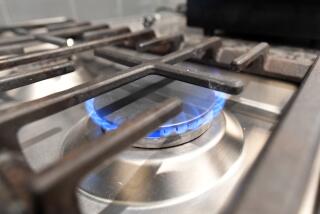Would Vents Reduce Home’s Musty Odor?
- Share via
Question: Each rainy season, the ground under my 36-year-old home becomes wet and the house retains a slight, musty smell throughout the year. When I purchased the property, my home inspector said I should install foundation vents. But the contractor I consulted discouraged this because, according to him, vents would cause heat loss and possibly increase the drainage problem. Why would vents have these effects and what recommendations, if any, would you make?
Answer: To allege that added foundation vents could worsen a drainage problem is baseless and far-reaching. But there is a circumstance in which subarea ventilation could cause heat loss.
Some homes have what is known as a perimeter insulated foundation system, in which the foundation walls are insulated, the ventilation is reduced and the ground surface is covered with a vapor barrier. The purpose of this type of construction is to use the subarea as a heat reservoir for the dwelling.
If this is the case with your home, then I can understand why your contractor advised against installing vents. However, such systems are not typically found in 36-year-old dwellings, so the contractor’s warning may not be appropriate.
If musty odors exist in your home, there are inherent problems in need of attention. The presence of water beneath the building may indicate faulty grading around the exterior of the structure or adverse geological conditions on the property.
Excess moisture beneath a home is undesirable because it can result in costly consequences. For example, surface water movement in the subarea can cause soil erosion at the foundations or piers. There is also the potential for moisture condensation and resultant wood rot or possible rust damage at the structural hardware. Additionally, mold spores can contaminate the indoor air, causing serious health problems.
Given the potential for adverse effects, you need to take action. Your first step is to have the site drainage evaluated by a licensed geo-technical engineer or other drainage specialist. Reducing or eliminating water intrusion beneath your home could be as simple as regrading the ground surfaces around the building. On the other hand, a complex drainage mitigation system may be needed to fully resolve the problem.
As additional insurance against moisture-related problems under the building, two further upgrades are recommended-and this brings us back to the subject of foundation vents. Ventilation reduces air humidity, which can prevent moisture condensation on structural surfaces. This is why vents are required by the building code. Another preventive measure is a plastic membrane, laid over the ground surfaces beneath the building. This vapor barrier will prevent evaporation of ground moisture, thereby reducing the likelihood of condensation.
Also, have the subfloor structure evaluated for possible fungus infection. This can be done by a licensed pest control operator. Where moisture has caused condensation on the structure, fungus damage is common and can involve considerable reconstruction of the wood framing and subfloor. If damage is discovered early, the extent of this work can be significantly less than if you wait.
Fireplace Insert Can Be a Problem
Q: My 1983 mobile home has a built-in fireplace that looks nice but doesn’t produce much heat. Several years ago, I installed an insert so that I could heat my home with wood. But now I’m wondering about the expected life of the smokestack in a mobile home. Do you think it may be unsafe from prolonged use? I wouldn’t want it to be a problem if I decide to sell.
A: The safety of your smokestack became questionable the moment you installed the insert. Manufacturers of prefabricated fireplaces forbid wood-burning inserts in their products.
Unfortunately, insert manufacturers who say that their fixtures can be safety added to manufactured fireplaces have clouded the issue. Where disagreements involving fire safety arise, the wisest approach is to err on the side of caution. The fireplace manufacturer’s warning not to install a wood-burning insert should be taken seriously.
Your fireplace and chimney were originally designed, tested and approved for maximum specified exhaust temperatures. Since wood-burning inserts are designed to burn hotter than fireplaces, the chimney temperature safety limit may be exceeded when you operate your insert. Furthermore, any unapproved alteration to the original fireplace design voids the manufacturer’s fire safety warranty.
You should consult the fireplace manufacturer and have the installation evaluated by a qualified fireplace contractor or certified chimney sweep.
*
If you have questions or comments, contact Barry Stone through his Web site at https://www.housedetective .com. Distributed by Access Media Group.


